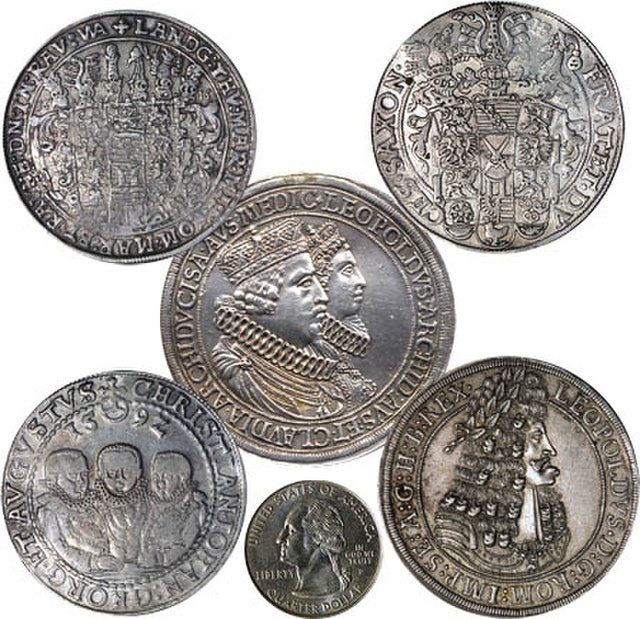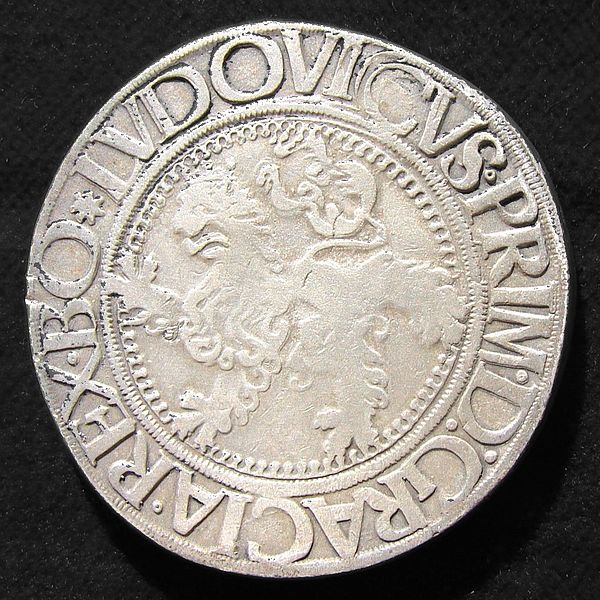The svenska riksdaler was the name of a Swedish coin first minted in 1604. Between 1777 and 1873, it was the currency of Sweden. The daler, like the dollar, was named after the German Thaler. The similarly named Reichsthaler, rijksdaalder, and rigsdaler were used in Germany and Austria-Hungary, the Netherlands, and Denmark-Norway, respectively. Riksdaler is still used as a colloquial term for krona, Sweden's modern-day currency.
An 8 daler piece of plate money (plåtmynt) at the British Museum
Silver coin: 1 Riksdaler with the portrait of King Gustav III on the front, the deep side is the royal seal, minted in 1781
A thaler or taler is one of the large silver coins minted in the states and territories of the Holy Roman Empire and the Habsburg monarchy during the Early Modern period. A thaler size silver coin has a diameter of about 40 mm and a weight of about 25 to 30 grams. The word is shortened from Joachimsthaler, the original thaler coin minted in Joachimsthal, Bohemia, from 1520.
Four thalers and one double thaler, compared to a U.S. quarter (bottom center): Clockwise from top left: Saxe-Altenburg 1616 (reverse), Saxony 1592, Austria 1701 (obverse), Saxony 1592 (obverse), Center: double thaler, Austria 1635 (obverse).
The 1486 Guldengroschen (obverse)
Obverse
Reverse






